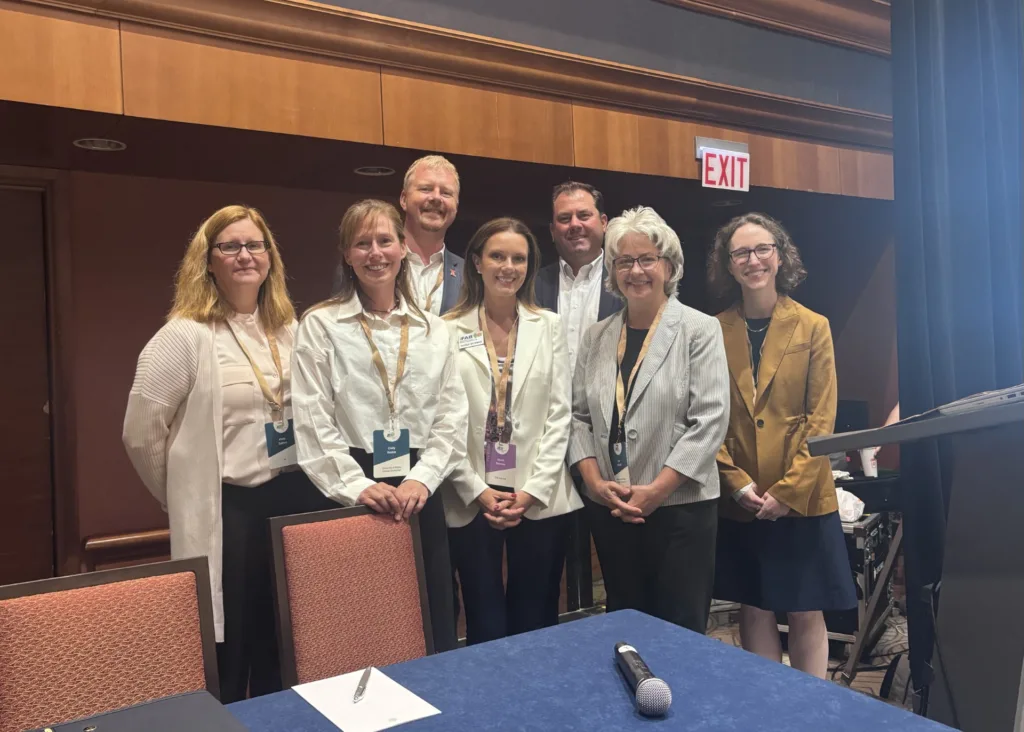At the 2025 Sustainability Research and Innovation (SRI) Congress in Chicago, a panel titled “Breakthrough Biotech and Sustainability Science for the Bioeconomy” brought together voices from academia, industry, and government to highlight the transformative potential of next-generation biotechnologies to support a bioeconomy.
The bioeconomy that the speakers and their colleagues are working towards involves the development of new crops, new microbes, and precision fermentation advances for domestically produced feedstocks and chemicals. These chemicals can be converted to a wide range of products to boost economic growth while also enhancing ecosystem services.

Moderated by Kim Kidwell from the University of Illinois Urbana-Champaign, the panel featured Andrew Leakey, Professor of Plant Biology and Director of the Center for Advanced Bioenergy and Bioproducts Innovation (CABBI), a Department of Energy (DOE)-funded Bioenergy Research Center; Kirsty Salmon, Chief Scientist and VP of Bioenergy and Hydrogen Technology, BP; Emily Heaton, Professor of Crop Sciences and CABBI co-PI; Travis Hedrick, CEO of AGgrowTech; Corinne Scown, Lawrence Berkeley National Laboratory and the Joint BioEnergy Institute, a DOE-funded Bioenergy Research Center; and Nicole Bateman, Chief Strategy Officer of the Illinois Fermentation and Agriculture Biomanufacturing (iFAB) Tech Hub. These leaders emphasized the powerful synergy between scientific discovery and real-world implementation — made possible by strong, early-stage collaboration.
Leakey described the unique ‘lab to production line’ ecosystem needed to tackle grand challenges like this: “We’re looking to stack breakthroughs to advance the whole — that’s the opportunity we have with CABBI and the surrounding ecosystems.” He stressed that this type of large-scale, transdisciplinary research is rare but essential: “You need to ask the right question, in the right organism, at the right place, or risk failing to translate basic science into real-world value.”
Salmon spoke to the accelerating pace of innovation: “We’re doing things faster, and easier with AI. One of the coolest things I’ve seen is the creation of de novo enzymes — tools that didn’t even exist in nature, now enabling novel bioconversions.” Heaton added, “We were stuck making slow progress on promising crop species. Now that CABBI has mapped the full genome for miscanthus and created gene-editing tools, it’s a game changer. Suddenly, the pathway to a circular bioeconomy becomes clearer.”
Hedrick emphasized the value of engineering and agronomy working in tandem: “We’ve developed mechanical processes for planting crops that used to be done by hand. Planting by hand is expensive and hard to scale. This advance unlocks commercial-scale production and helps us learn from researchers to optimize crop traits.”
Scown stressed the importance of incorporating modeling early into the pipeline: “We’re creating open-source and democratized tools for techno-economic and lifecycle analyses to assess feedstock viability and system impacts. Venture capitalists’ eyes light up when they see this work already done.”
Panelists agreed that cross-sector engagement at the discovery phase creates long-term advantages. Is it common to have this level of integration early on? “No,” said Leakey. “But it changes the way we talk with our community and makes it a fun way to work.” Heaton echoed that sentiment: “You feel accountable to each other. It’s my responsibility to make sure these innovations reach the people downstream of my work.” Bateman added, “This all revolves around collaboration and communication. We’re better when we remove barriers and truly work together.”
As Scown concluded, “The future of the bioeconomy will be built on a diversity of feedstocks and a diversity of products.” This panel made it clear that through scientific innovation, regional investment, and unprecedented collaboration, that future is already taking shape.